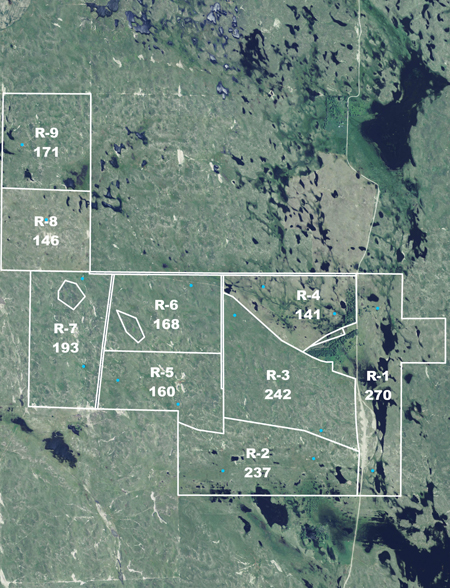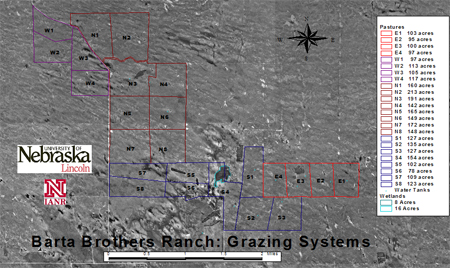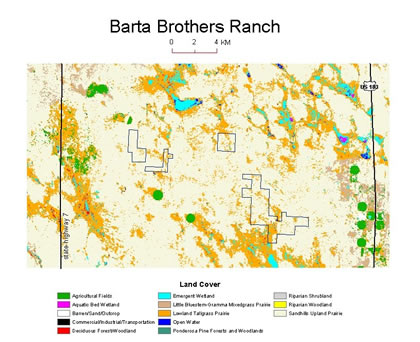Overview
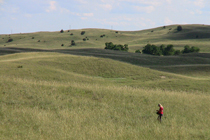
The property was acquired from Jim and Clifford Barta in 1996. The ranch is about 6,000 acres in size with over 5,500 acres categorized as upland range.
There is about 120 acres of contiguous subirrigated meadow and over 100 acres of discontinuous subirrigated meadow and wetland scattered over the ranch. The building site covers about 35 acres and includes a wide variety of tree resources. Facilities consist of a headquarters building with dormatory type living arrangements, a lab building, and large shed are also on the 35 acre building site. A weather station is also on site located North West of the heaquarters building.
Location
The ranch is located about 20 miles south of Long Pine in Rock and Brown Counties (42°14'N, 99°39'W) or 8 miles North West of Rose via Hwy 183.
Mission
Based on terms of the donation, the ranch is to serve as a model ranch and provide the facilities and support needed to conduct research and demonstrations relevant to Sandhills ranchers. Educational programs from the ranch are to play an important role in training students and continuing education for ranchers, conservationists, and representatives of federal and state agencies. Research and demonstrations are to focus on long-term grazing management systems and the biotic and abiotic factors associated with such systems.
Institutional Affiliation
University of Nebraska Foundation owns the property and the Eastern Nebraska Research and Extension Center - Northeast District is responsible for the management of the property.
Education
Individuals or groups wishing to visit BBR for educational,research or tour purposes should contact Ann Kepler.
Research
Current research projects focus on plant and livestock response to grazing systems. The site is ideally suited for this type of research as well as questions about ecosystem structure and function in the Sandhills. The rangeland at BBR is in good to excellent condition and is similar to most upland range in the eastern half of the Sandhills. It is an excellent demonstration site for ranchers in this area and is readily accessible by University students and the public. There are no specific restrictions for conducting research although proposals for research must be approved by the BBR Planning Committee.
Contacts
Doug Zalesky
Director, Eastern Nebraska Research & Extension Center
UNL - Barta Bros. Ranch
148 West 4th Street
Anisworth NE 69210
office phone: 402.624.8089
e-mail: dzalesky2@unl.edu
Aerial Photographs
This laboratory houses equipment for measuring carbon, water, and energy fluxes. Sensors are tested here in preparation for use at various field study sites, including the Carbon Sequestration Research Facility. Measuring stations for the National Atmospheric Deposition Program (NADP) for both atmospheric and mercury deposition and the USDA UV-B Monitoring Network are located at the lab. The Nebraska State Climate Office has one Automated Weather Data Network (AWDN) station located and the lab and several other within 3 miles of the lab.
Road Map
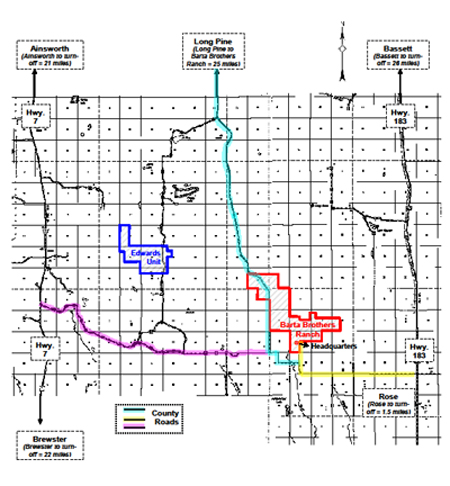
Land Use (GAP) Classification
Climate Data
See historical climate data from the nearest weather station at Anisworth, Nebraska.
Student Life 2010: Another Summer at the Barta Brothers Ranch
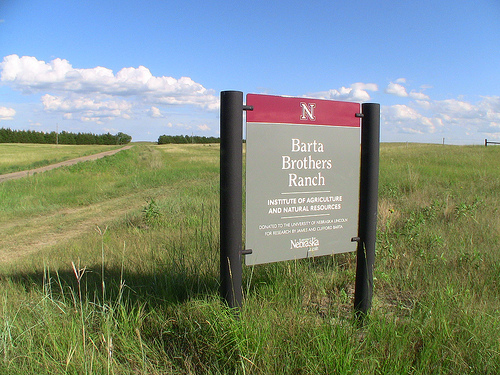
Driving big trucks, tearing around on ATVs, walking the Sand Hills in all weather conditions, and doing it all in the name of research – it’s just another summer at the Barta Brothers Ranch.
A long way from Lincoln, 20 miles south of Long Pine in Rock and Brown counties, students and researchers are in the middle of their field season at the BBR, a 6,000-acre property donated to the University by Clifford and James Barta in 1996.
Utilized by scientists, extension educators, students and ranchers, the site has been host to many research studies. These have included work on grazing systems, ecology of the Sand Hills, and for the past two summers, major research on prairie chickens.
This summer, undergraduates from the School of Natural Resources – Jessica Edgar (Fisheries and Wildlife) and Ben Beckman (Grasslands Ecology and Management) – are working with graduate student Lars Anderson to determine habitat preference for the native grasslands bird.
Edgar tracks hens using radio telemetry and GPS to determine where they nest and raise their brood. Beckman then gathers data on the surrounding vegetation . Anderson, advised by Larkin Powell and Walter Schacht, hopes the research will provide information to private landowners about how to manage grasslands for Prairie Chicken habitat.
Photo Essay by Kat Shiffler, School of Natural Resources
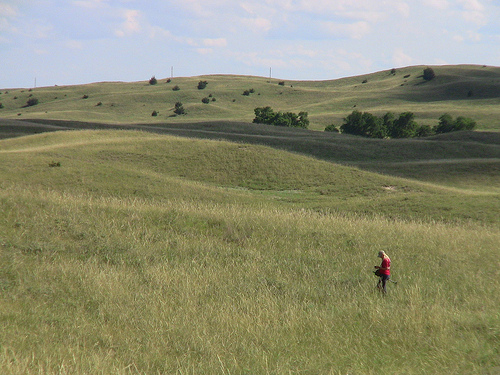
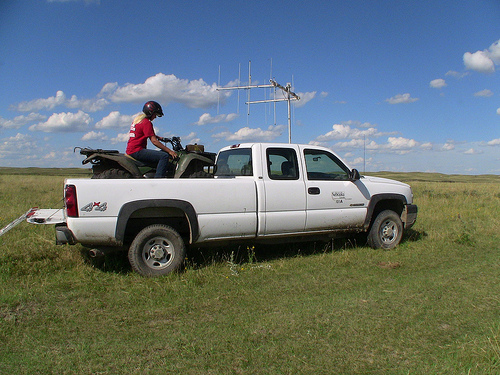
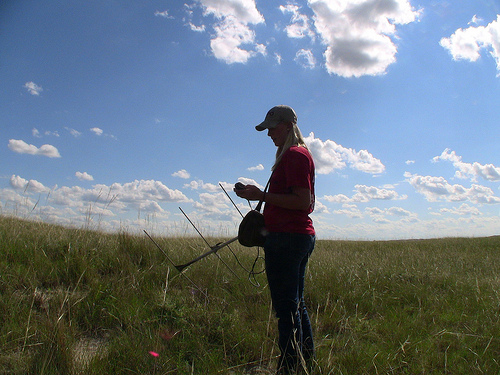
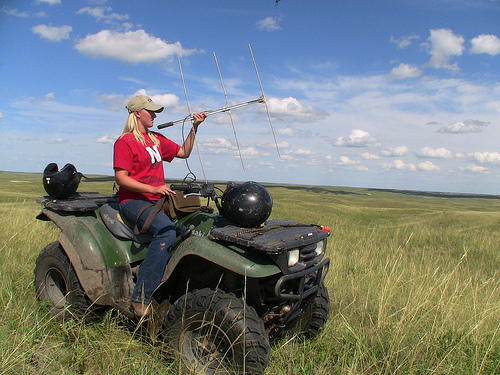
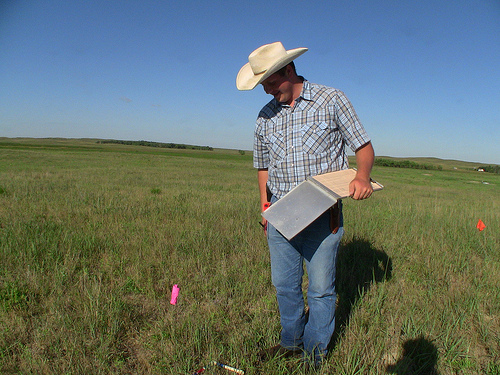
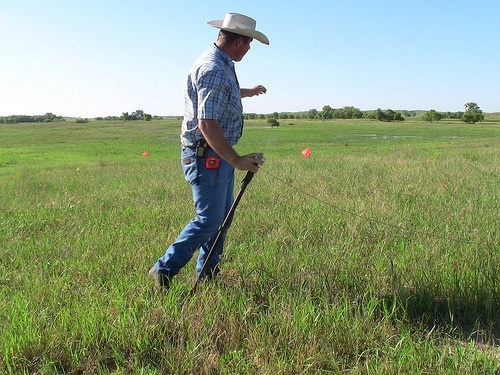
Summer at the Ranch: SNR Students Track Prairie Chickens in the Sandhill
Every summer researchers from the University of Nebraska spend time out at the Barta Brothers Ranch in the Sandhills. This video follows undergraduate students in the School of Natural Resources majoring in Fisheries and Wildlife and Grasslands Ecology and Management monitoring Prairie Chicken habitat.
